Leiming Zhang
Massive MIMO Evolution Towards 3GPP Release 18
Oct 15, 2022



Abstract:Since the introduction of fifth-generation new radio (5G-NR) in Third Generation Partnership Project (3GPP) Release 15, swift progress has been made to evolve 5G with 3GPP Release 18 emerging. A critical aspect is the design of massive multiple-input multiple-output (MIMO) technology. In this line, this paper makes several important contributions: We provide a comprehensive overview of the evolution of standardized massive MIMO features from 3GPP Release 15 to 17 for both time/frequency-division duplex operation across bands FR-1 and FR-2. We analyze the progress on channel state information (CSI) frameworks, beam management frameworks and present enhancements for uplink CSI. We shed light on emerging 3GPP Release 18 problems requiring imminent attention. These include advanced codebook design and sounding reference signal design for coherent joint transmission (CJT) with multiple transmission/reception points (multi- TRPs). We discuss advancements in uplink demodulation reference signal design, enhancements for mobility to provide accurate CSI estimates, and unified transmission configuration indicator framework tailored for FR-2 bands. For each concept, we provide system level simulation results to highlight their performance benefits. Via field trials in an outdoor environment at Shanghai Jiaotong University, we demonstrate the gains of multi-TRP CJT relative to single TRP at 3.7 GHz.
Training Robust Graph Neural Networks with Topology Adaptive Edge Dropping
Jun 05, 2021
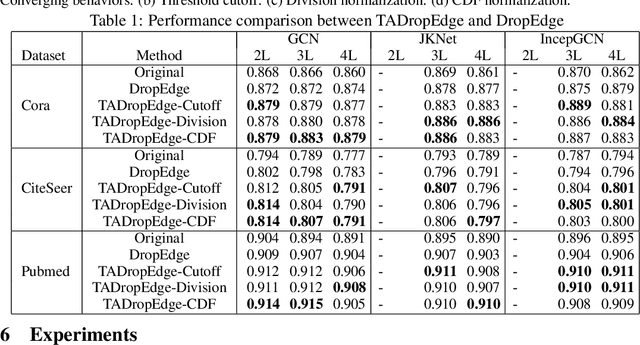


Abstract:Graph neural networks (GNNs) are processing architectures that exploit graph structural information to model representations from network data. Despite their success, GNNs suffer from sub-optimal generalization performance given limited training data, referred to as over-fitting. This paper proposes Topology Adaptive Edge Dropping (TADropEdge) method as an adaptive data augmentation technique to improve generalization performance and learn robust GNN models. We start by explicitly analyzing how random edge dropping increases the data diversity during training, while indicating i.i.d. edge dropping does not account for graph structural information and could result in noisy augmented data degrading performance. To overcome this issue, we consider graph connectivity as the key property that captures graph topology. TADropEdge incorporates this factor into random edge dropping such that the edge-dropped subgraphs maintain similar topology as the underlying graph, yielding more satisfactory data augmentation. In particular, TADropEdge first leverages the graph spectrum to assign proper weights to graph edges, which represent their criticality for establishing the graph connectivity. It then normalizes the edge weights and drops graph edges adaptively based on their normalized weights. Besides improving generalization performance, TADropEdge reduces variance for efficient training and can be applied as a generic method modular to different GNN models. Intensive experiments on real-life and synthetic datasets corroborate theory and verify the effectiveness of the proposed method.
Pursuer Assignment and Control Strategies in Multi-agent Pursuit-Evasion Under Uncertainties
Mar 29, 2021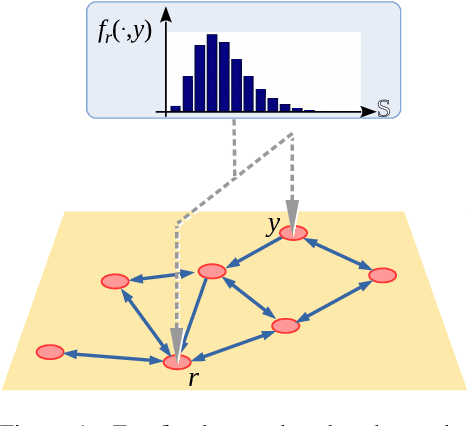

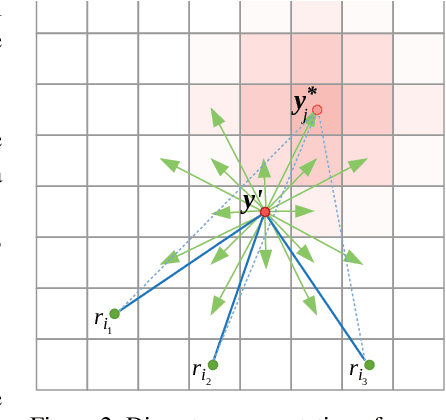
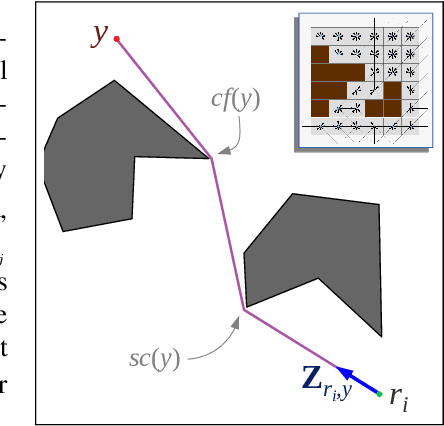
Abstract:We consider a pursuit-evasion problem with a heterogeneous team of multiple pursuers and multiple evaders. Although both the pursuers (robots) and the evaders are aware of each others' control and assignment strategies, they do not have exact information about the other type of agents' location or action. Using only noisy on-board sensors the pursuers (or evaders) make probabilistic estimation of positions of the evaders (or pursuers). Each type of agent use Markov localization to update the probability distribution of the other type. A search-based control strategy is developed for the pursuers that intrinsically takes the probability distribution of the evaders into account. Pursuers are assigned using an assignment algorithm that takes redundancy (i.e., an excess in the number of pursuers than the number of evaders) into account, such that the total or maximum estimated time to capture the evaders is minimized. In this respect we assume the pursuers to have clear advantage over the evaders. However, the objective of this work is to use assignment strategies that minimize the capture time. This assignment strategy is based on a modified Hungarian algorithm as well as a novel algorithm for determining assignment of redundant pursuers. The evaders, in order to effectively avoid the pursuers, predict the assignment based on their probabilistic knowledge of the pursuers and use a control strategy to actively move away from those pursues. Our experimental evaluation shows that the redundant assignment algorithm performs better than an alternative nearest-neighbor based assignment algorithm.
Feature Interaction based Neural Network for Click-Through Rate Prediction
Jun 07, 2020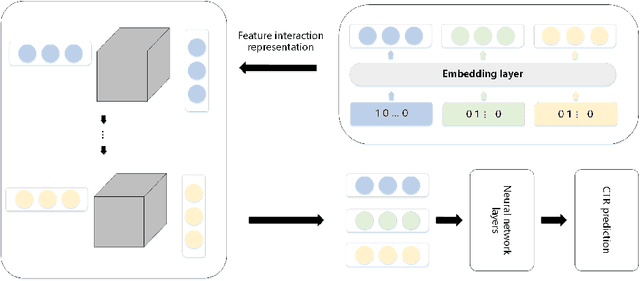

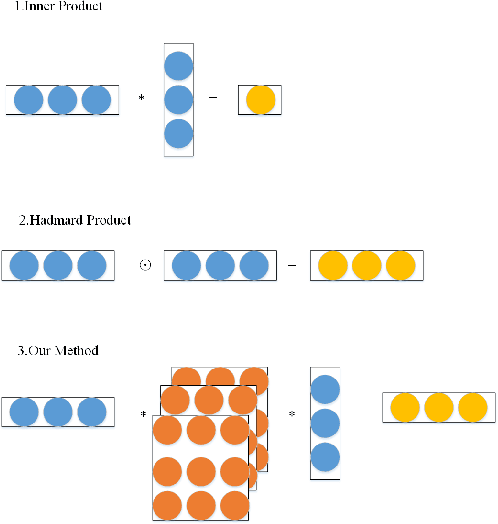
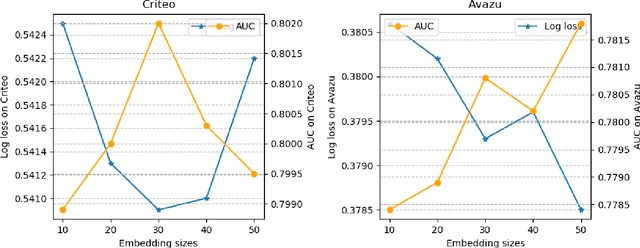
Abstract:Click-Through Rate (CTR) prediction is one of the most important and challenging in calculating advertisements and recommendation systems. To build a machine learning system with these data, it is important to properly model the interaction among features. However, many current works calculate the feature interactions in a simple way such as inner product and element-wise product. This paper aims to fully utilize the information between features and improve the performance of deep neural networks in the CTR prediction task. In this paper, we propose a Feature Interaction based Neural Network (FINN) which is able to model feature interaction via a 3-dimention relation tensor. FINN provides representations for the feature interactions on the the bottom layer and the non-linearity of neural network in modelling higher-order feature interactions. We evaluate our models on CTR prediction tasks compared with classical baselines and show that our deep FINN model outperforms other state-of-the-art deep models such as PNN and DeepFM. Evaluation results demonstrate that feature interaction contains significant information for better CTR prediction. It also indicates that our models can effectively learn the feature interactions, and achieve better performances in real-world datasets.
 Add to Chrome
Add to Chrome Add to Firefox
Add to Firefox Add to Edge
Add to Edge